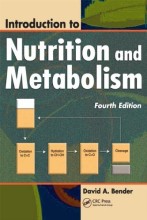Summary: Nutritional Physiology
- This + 400k other summaries
- A unique study and practice tool
- Never study anything twice again
- Get the grades you hope for
- 100% sure, 100% understanding
Read the summary and the most important questions on Nutritional Physiology
-
Mass flow of nutrients
This is a preview. There are 13 more flashcards available for chapter 13/07/2016
Show more cards here -
True or false? Fermentation in the colon by microbiota of non-digestible products can lead to small sugars and fatty acids, but not to amino acids. Those will only be derived from your food.
True -
What is the breakdown of protein called and what is needed to accomodate this breakdown?
It is called proteolysis. This will cost a lot of energy without enzymes; enzymes lower the activation energy. Enzymes are stored as inactive pro-enzymes. -
In what form are amino acids, glucose and glycerol+fatty acids stored?
Subsequently protein, glycogen and triglycerides (neutral fat). They are all linked to degradation/catabolism ultimately leading to the citric acids cycle. -
How many of the total glucose production is used by the brain in a 24 hours time span?
More than two-third of the production. -
What does the nutritional paradox mean?
It means that the food and your body are no natural allies; in fact food isn't meant for you to use as best as possible; most food isn't natural. Only human breast milk that's given to you as a baby is. -
What is the function of the villi, enterocytes and goblet cells in the wall of the small intestine?
Villi increases the surface area to enhance digestion and absorption of the food. Villi has enterocytes on it, which absorb the monomers passing by. In between the enterocytes are goblet cells, that produces mucus to protect the villi. -
Name all parts where a villi consists of.
- A villi has a wall with enterocytes and goblet cells.
- Inside the fingerlike foldings of the cell membrane is a lacteal that is in connection with the lymphatic drainage. This lacteal takes care of the uptake of lipids.
- In the villi are also small blood arteries that takes care of blood supply and venous drainage to absorb the monomers taken up by the enterocytes. -
Name the four different layers of the GI-tract and their function
- Mucosa -> enterocytes which facilitates secretion and absorption
- Submucusa -> vascular layer for the blood supply
- Muscularis -> muscle layer to move and mix the food in the tract constantly.
- Serosa -> protective layer to keep the intestine intact.
-
Gut stimuli evoke digestive responses via the enteric and the central nervous systems. The nervus fagus integrates the brain area with your GI-tract. There is a constant communication between them. Three mechanisms of communication response in the GI-tract, name them and their function.
- Endocrine system -> a sensor cell releases hormones for a specific target cell to act upon it.
- Neurocrine system -> neurones release a neurotransmitter and target cells respond.
- Paracrine system -> a specific cell senses one of the compounds and its releases a mediator so the neighbouring cells are immediately affected to for instance releasing enzymes or acids.
-
Anticipation to a meal
This is a preview. There are 17 more flashcards available for chapter 14/07/2016
Show more cards here -
What does the cephalic phase include?
Seeing, hearing of smelling food.
- Higher grades + faster learning
- Never study anything twice
- 100% sure, 100% understanding
Topics related to Summary: Nutritional Physiology
-
Anticipation to a meal
-
Intestinal phases
-
Nutritional energy and the role of ATP
-
ATP yield
-
Carbohydrate metabolism I
-
NP1 Intro to course & digestive system
-
NP2 Anticipation to a meal
-
NP3 Intestinal phases
-
NP3a Bariatry and Ghrelin
-
NP4 Energetic conversion of nutrients, ATP
-
NP5 ATP yield, TCA cycle
-
NP6 Carbohydrate metabolism I
-
NP7 Carbohydrate metabolism II
-
NP8 Gluconeogenesis, PPP
-
NP9 Amino acid catabolism
-
NP10 Fat and fatty acid (Lipid) metabolism
-
NP10a Carb and amin oacid metabolism, ketogenesis
-
NP11 Efficiency of fat synthesis
-
NP12 Energetic efficiency, heat production
-
NP13 Heat balance, body temperature, calorimetry
-
NP14 Heat diagram (comfort zone)
-
NP15 (assignments) thermoregulation
-
NP16 Intro protein metabolism
-
NP17 Protein turnover and adaptation
-
NP18 Metabolic aspects of stress
-
NP19 Molecular and physiological regulation
-
NP20 Mitochondrial aspects / assignments protein metabolism

































